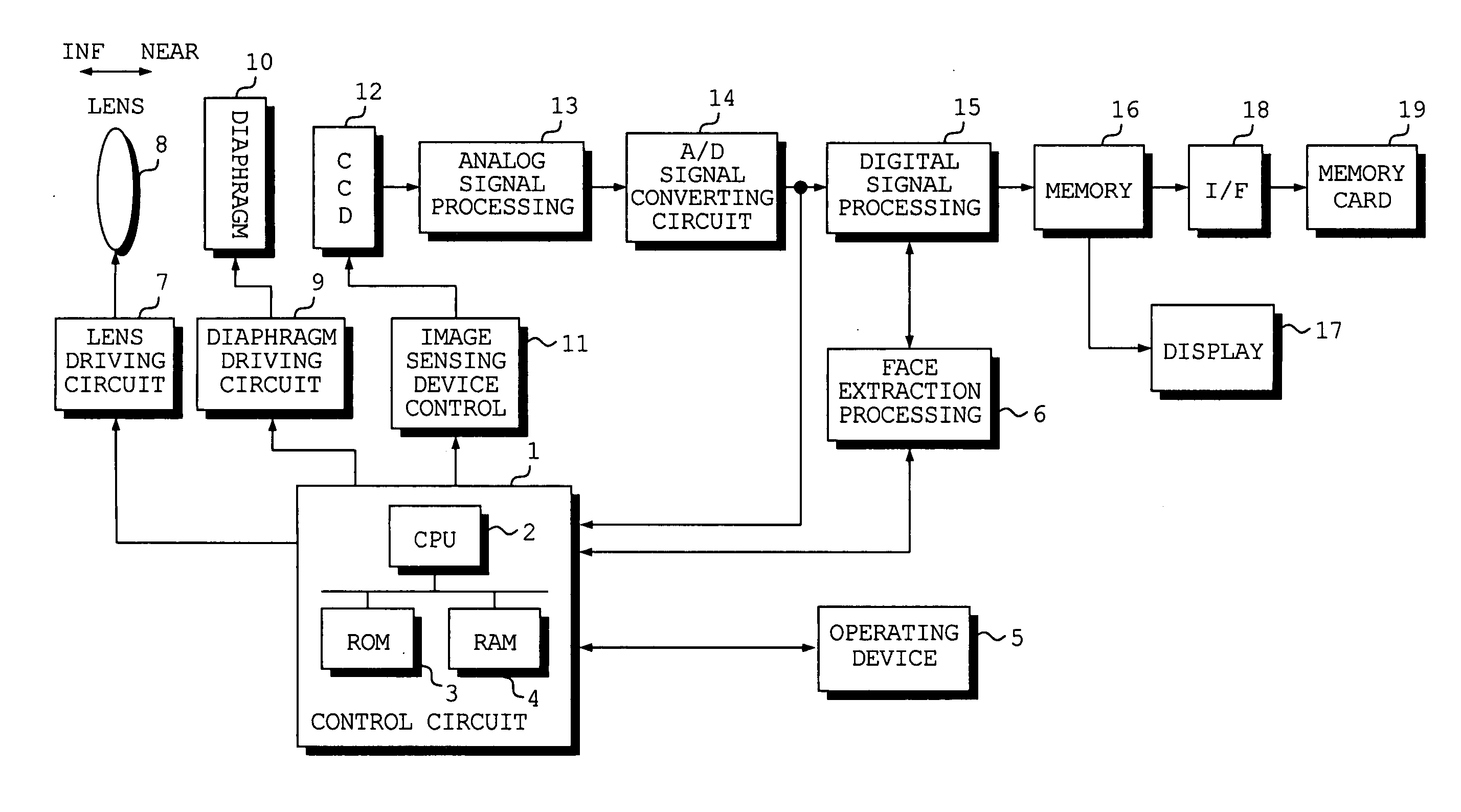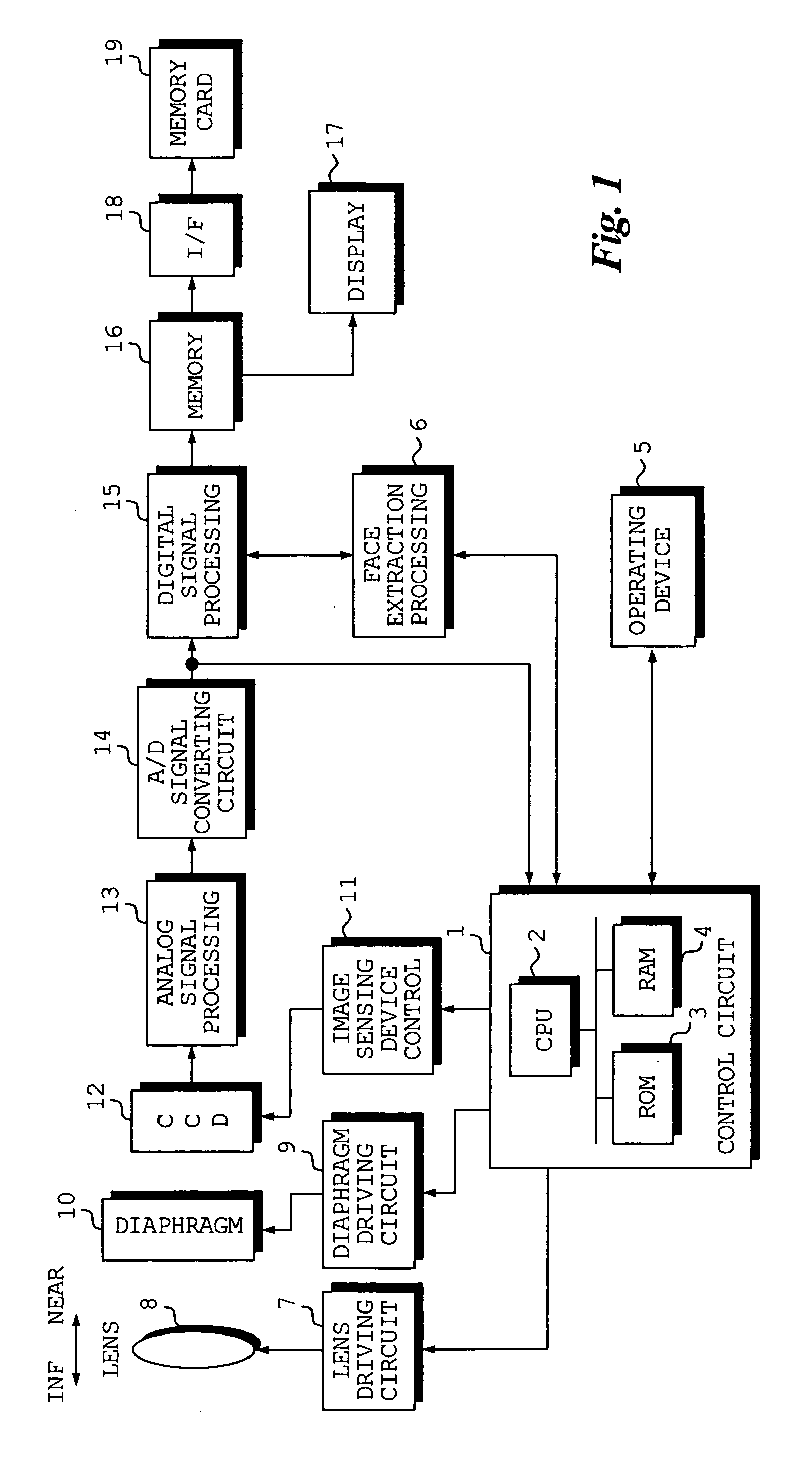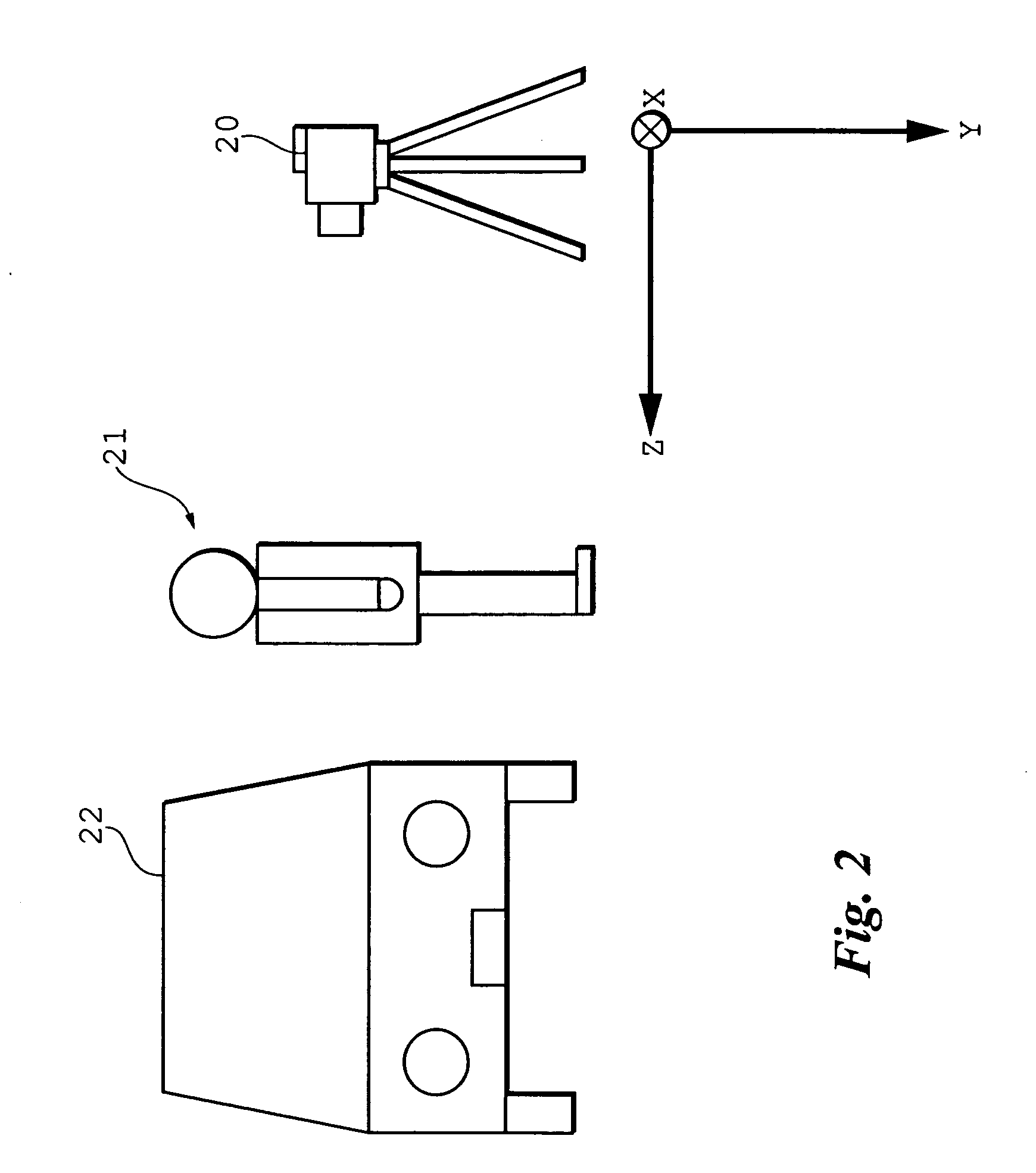Apparatus and method for deciding in-focus position of imaging lens
an imaging lens and in-focus position technology, applied in the field of imaging lens in-focus position determination, can solve the problems of inability to accurately detect the skin-tone area, inability to accurately focus, and difficulty in accurately detecting the target in an extremely out-of-focus state, and achieve the effect of focusing comparatively accurately
- Summary
- Abstract
- Description
- Claims
- Application Information
AI Technical Summary
Benefits of technology
Problems solved by technology
Method used
Image
Examples
Embodiment Construction
[0049] Preferred embodiments of the present invention will now be described in detail with reference to the drawings.
[0050]FIG. 1 is a block diagram illustrating the electrical configuration of a digital still camera according to an embodiment of the present invention.
[0051] The digital still camera according to this embodiment is so adapted that a face in the image of a subject will come into focus in suitable fashion.
[0052] The operation of the overall digital still camera is controlled by a control circuit 1. The control circuit 1 includes a CPU 2, a ROM 3 in which the operating program of the digital still camera and prescribed data, etc., have been stored, and a RAM 4 for storing data temporarily.
[0053] The digital still camera is provided with an operating device 5 having switches and buttons such as a shutter-release button of two-step stroke type. An operating signal that is output from the operating device 5 is input to the control circuit 1.
[0054] A diaphragm 10 and i...
PUM
 Login to View More
Login to View More Abstract
Description
Claims
Application Information
 Login to View More
Login to View More - R&D
- Intellectual Property
- Life Sciences
- Materials
- Tech Scout
- Unparalleled Data Quality
- Higher Quality Content
- 60% Fewer Hallucinations
Browse by: Latest US Patents, China's latest patents, Technical Efficacy Thesaurus, Application Domain, Technology Topic, Popular Technical Reports.
© 2025 PatSnap. All rights reserved.Legal|Privacy policy|Modern Slavery Act Transparency Statement|Sitemap|About US| Contact US: help@patsnap.com



